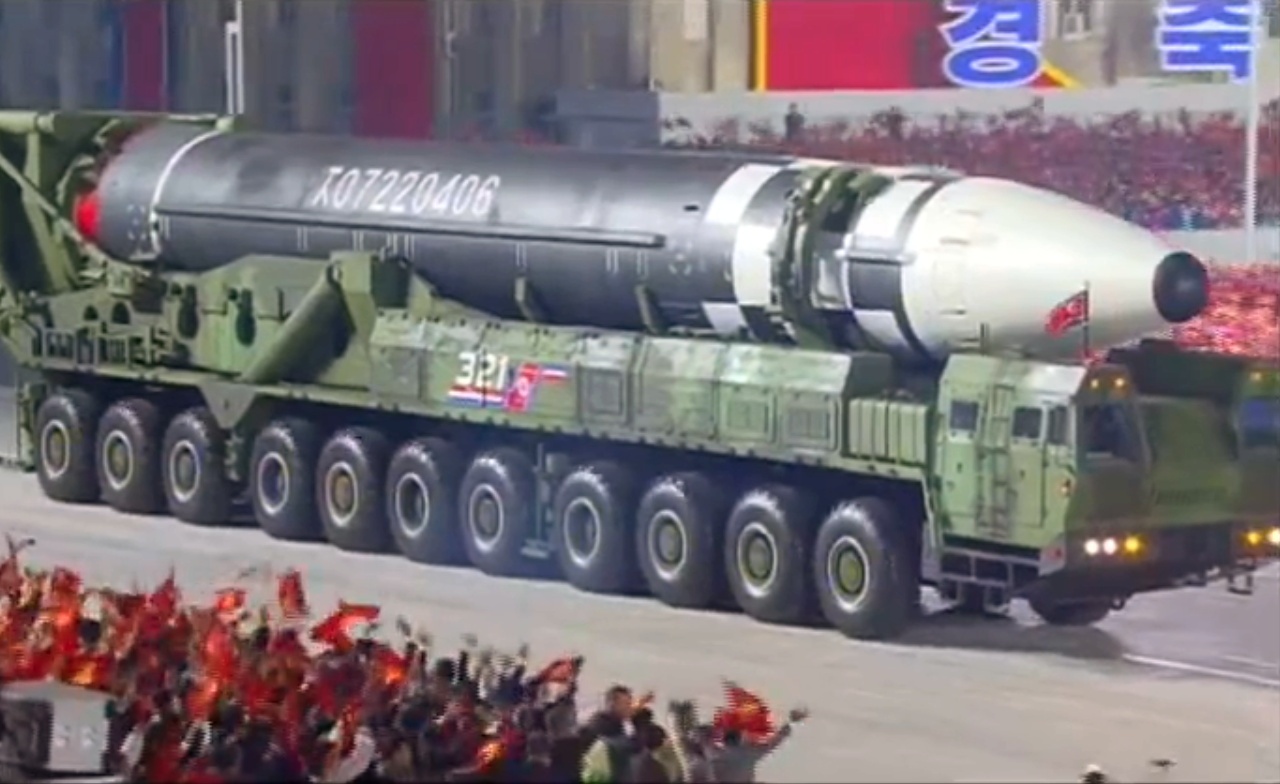
SEOUL, SYDNEY—What was presented as a new and larger North Korean intercontinental ballistic missile (ICBM) on Oct. 10 may be intended to carry multiple warheads or to reach targets unattainable by its predecessor.
The new liquid-propellant weapon appeared to be an enlargement of North Korea’s previous ICBM, Hwasong 15, which implicitly has insufficient payload-range capability for all of North Korea’s purposes.
The second stage, at least, appeared to have been lengthened in the new missile, which was unveiled during a parade in the country’s capital Pyongyang.
The presence and shape of backward-facing slots at the forward end of the second stage suggest an arrangement of small rockets for detaching the payload or its fairing. The presence of the fairing on the new ICBM raises the possibility that multiple warheads are carried, threatening larger areas of destruction for a given payload, whereas Hwasong 15’s nose is the exposed reentry vehicle.
No test of this weapon has been reported. Indeed, there is no guarantee that what appeared in the parade was in fact a missile, not a mockup.
But the second-stage engine of this ICBM type was tested in December 2019, a South Korean military source told the Chosun Ilbo newspaper in Seoul. That would be consistent with the main modification from the Hwasong 15 being an enlarged second stage.
Hwasong 15 has been tested only once, in 2017, raising great doubts about its operational value.
The Center for Strategic and International Studies in Washington estimates the range of Hwasong 15 at 8,500-13,000 km (5,300-8,100 mi.), meaning the weapon could at least reach Alaska and Washington state and possibly—as North Korea has claimed—all of the U.S.
The longest estimated reach for Hwasong 15 now looks questionable, since an obvious reason for developing a larger weapon is to increase range—though another is to increase payload for an unchanged range. Multiple warheads could easily weigh more than a unitary payload. Also, adding decoys would add weight.
The Chosun estimated the new ICBM carries two or three warheads and has a length of 22-23 m (72-75 ft.). CSIS reckons the Hwasong 15 is 21-22.5 long and has a diameter of 2-2.4 m.
Some media are referring to the new ICBM as the Hwasong 16, but North Korea has not stated its name. The U.S. refers to the Hwasong 15 as the KN-22. “Hwasong” means “Mars.”
The new ICBM appeared on an extraordinary mobile launcher with no fewer than 11 axles, two more than the one designed for the Hwasong 15 launcher, itself unusually large. The cab design of the new launcher, at least, was different. Consistent with greater missile length, the heave arms on each side are mounted further from the rear—ahead of three axles instead of two.
The greater size of the launcher must reduce mobility, demanding larger radiuses for turns and stronger bridges, and increases the target size. It will be harder to hide and easier to hit.
Road-mobile ballistic missiles generally have solid propellants, making them more robust and easier to launch.
North Korea has been working on solid-propellant strategic missiles, too, however, and showed a new submarine-launched type in two versions in the same parade.



Comments
Bernard Biales